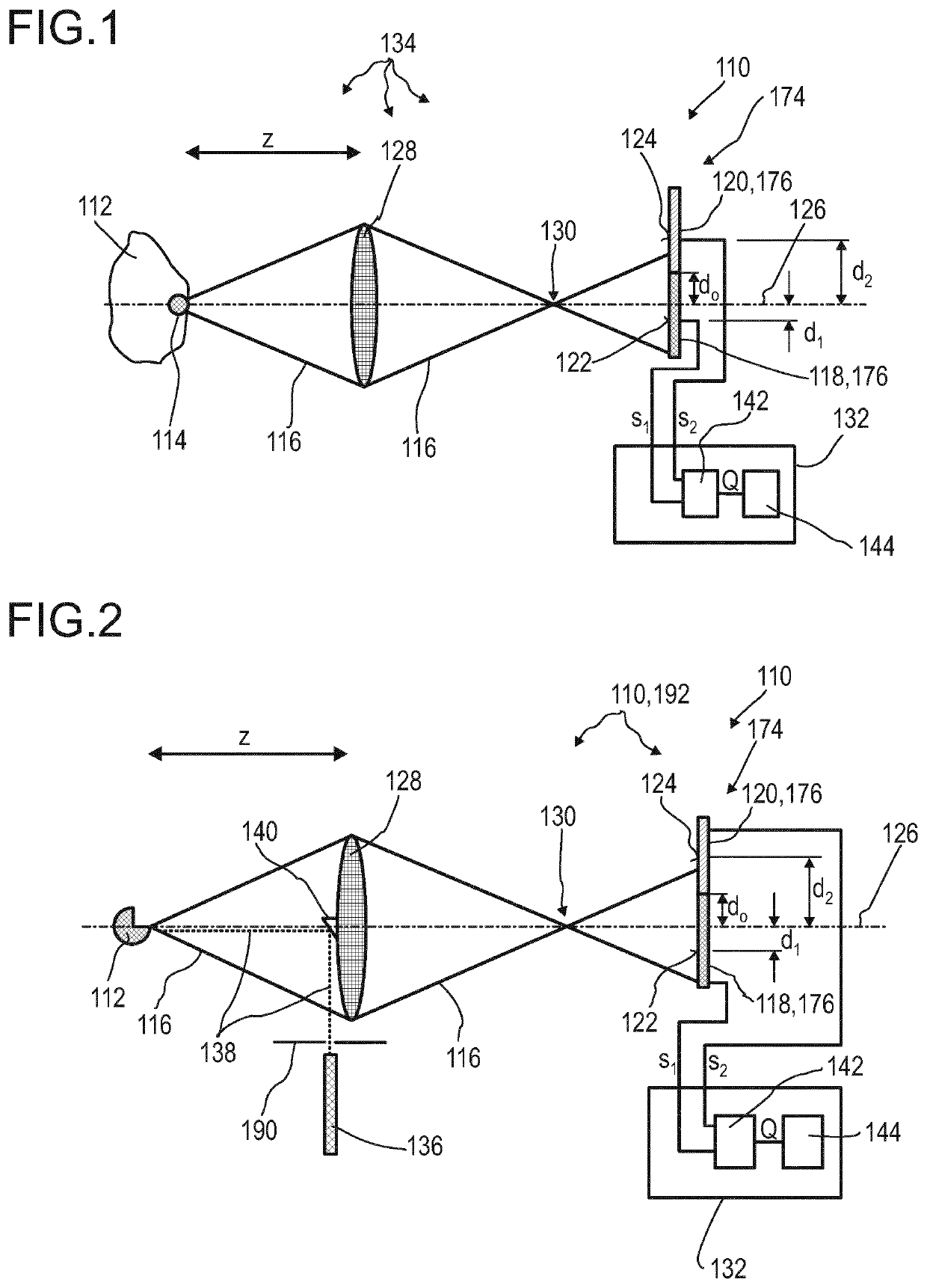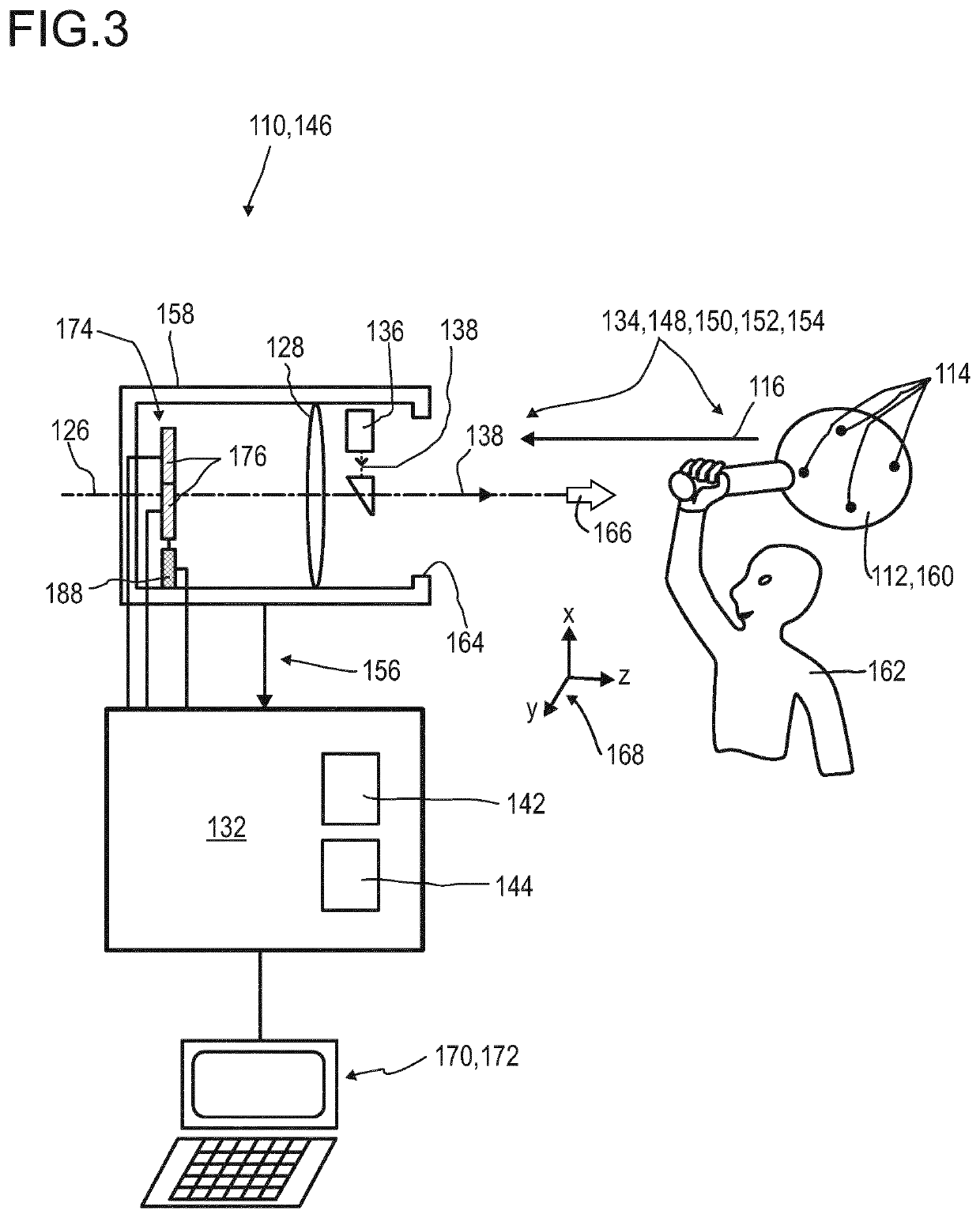Detector for optically detecting at least one object
- Summary
- Abstract
- Description
- Claims
- Application Information
AI Technical Summary
Benefits of technology
Problems solved by technology
Method used
Image
Examples
Embodiment Construction
[0313]In FIG. 1, a schematic view of a first embodiment of a detector 110 for determining a position of at least one object 112 is depicted. In this case, the object 112 comprises a beacon device 114, from which a light beam 116 propagates towards a first optical sensor 118 and a second optical sensor 120. The first optical sensor 118 comprises a first light-sensitive area122, and the second optical sensor 120 comprises a second light-sensitive area 124. The optical sensors 118, 120, as shown e.g. in FIG. 4, may be part of an array 174 of optical sensors 176, such as the first optical sensor 118 being the optical sensor 176 in the upper left corner of the array 174 and the second optical sensor 120 being the optical sensor 176 in the lower right corner of the array 174. Other choices are feasible. The array 174, as an example, may be a quadrant photodiode 178, and the optical sensors 176 may be partial diodes of the quadrant photodiode 178.
[0314]The light beam 116, as an example, ma...
PUM
 Login to View More
Login to View More Abstract
Description
Claims
Application Information
 Login to View More
Login to View More - R&D
- Intellectual Property
- Life Sciences
- Materials
- Tech Scout
- Unparalleled Data Quality
- Higher Quality Content
- 60% Fewer Hallucinations
Browse by: Latest US Patents, China's latest patents, Technical Efficacy Thesaurus, Application Domain, Technology Topic, Popular Technical Reports.
© 2025 PatSnap. All rights reserved.Legal|Privacy policy|Modern Slavery Act Transparency Statement|Sitemap|About US| Contact US: help@patsnap.com



